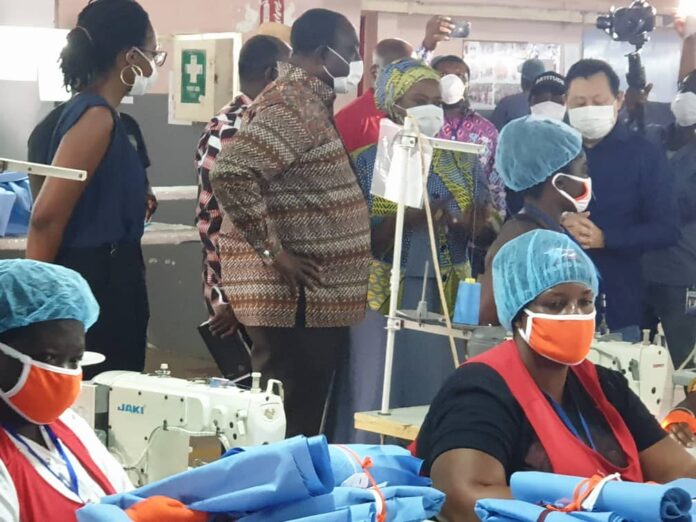
Banks have stepped up their game to help quick recovery of the economy from the ruins of coronavirus pandemic, as new data show increased credit support to one of the most pressing areas of the economy – the manufacturing sector.
The Statistical Bulletin report (June 2020) indicates that credit to the sector has increased following a decline in March – the very month that coronavirus pandemic was first recorded in the country – probably as a precautionary measure on both the supply side (banks) and the demand side (manufacturing firms).
Credit to the sector in March fell to GH¢4.7billion from GH¢5.10billion the previous month. But following that decline, loans advanced to the sector increased to GH¢5.06billion in April, and continued in that upward trajectory to GH¢5.30billion and GH¢5.32billion in May and June respectively.
This comes as a positive development for a sector that has seen inconsistent growth over the past few years, due to challenges such as financial constraints and the high cost of doing business. After hitting an impressive 9.5 percent in 2017, the sector’s growth has declined to 6.3 percent in 2019.
Commenting on this, an economist at the University of Ghana, Prof. Eric Osei-Assibey, said the economy will see hastened growth if banks continue to satisfy the manufacturing sector’s financial needs.
“The manufacturing sector is often a labour-intensive sector, and therefore if you want inclusive economic growth it has to be driven by the manufacturing sector or the agriculture sector. So, if the manufacturing sector is getting access to finance that will help it to invest, expand and employ more people, then, of course, it is very good for the economy – and that could spur growth.
“Now that the electricity challenges and others are things of the past, one of the key constraints of manufacturing sector is access to credit. And so if that constraint is being addressed, then we expect the sector’s performance to improve in the years ahead – particularly as it is coming in the midst of the pandemic when there is so much uncertainty and banks are actually quite apprehensive about risk. This could even lead to government exceeding its target for the year in terms of economic growth,” he told the B&FT in an interview.
Despite increased access to credit for the sector, one major factor that has gained concern among the business community is the affordability of such loans. The average lending rate of commercial banks, though it has declined marginally, still remains high for businesses. As of June 2019, the average lending rate was 21.95 percent. This is a slight improvement from the 23 percent it stood at for about a year and a half, beginning December 2018.
For Prof. Osei-Assibey, it is necessary and vital for the rate to come down for businesses to expand and employ more; but, he adds, it may take some time as banks are still cautious about systemic risk brought on by the pandemic.
“The lending rates are better now, but still remain high even in the sub-region. So, it will definitely benefit the manufacturing sector if it comes down. But there are still systemic risks and banks are concerned, and so we shouldn’t expect a drastic fall of the rate any time soon,” he said.









